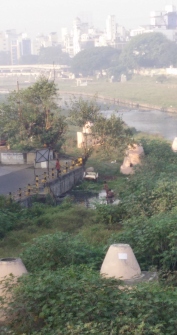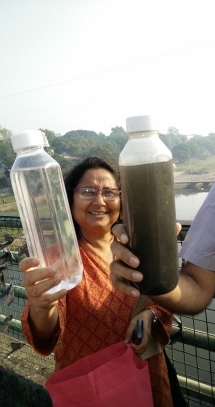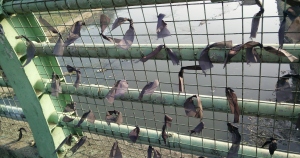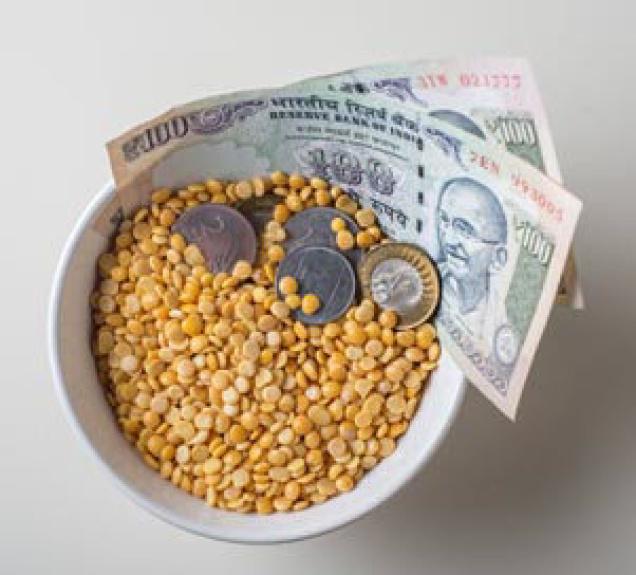“Please finish your milk, beta. We’ve to go out.” That was me talking to my Lil One, who was staring into his glass of milk with something on his mind.
“Can we buy a new game CD, Mom, please? Everyone in my class has the Batman game and I don’t have it. Please, mom?”
Sigh. “No. I don’t like this game thingy. And I don’t like Batman either.”
“Oh, but that’s totally not fair, Mom. I like him. Everyone likes him. You are the only one who likes some ancient, antique stuff, Mom!”
Heehee, wickedly I took a quick look at Hubby, hoping he had heard that he had been just classified as ancient and antique. But much to my disappointment, he was deeply immersed in reading and not listening to our argument and had, as usual, nothing to do with this earth shattering, critical decision of whether to buy a new game CD. Oh, I am going to be daddy in the next birth, I thought viciously, looking at his peaceful countenance.
It’s my new favourite thought these days, brought on by Lil One’s semester end exams last month when I was sweating away on the geographical peculiarities of Tanzania even as Hubby asked Lil One nonchalantly, “So, when’s the exam, champ?”Grrrrrr, I want to be Daddy.
“And I am sure Batman costs only a few crores or something?” I asked sarcastically.
“Come off it, mom, you’re always overdoing it!”
Well, perhaps I am. Econ Mom was already examining the Diamond-Water Paradox in her mind with great interest (renamed Batman-Water paradox in the present context).
The paradox, first presented by Adam Smith, looks at the ironical situation of how we pay huge sums of money for apparently non-useful commodities like diamonds and art pieces and Batman CDs, but get life-saving air and water free. Smith’s resolution of the Paradox was that since water is available freely, but diamonds require much toil to be mined, the value of labor gets reflected in the value of the diamond.
Of course, the Marginalists challenged this labor theory of value. Marshall resolved the paradox by suggesting that the price of a commodity is equal to the marginal utility that is derived from the product.
Thus, the Marginal Utility (increment in snob status) that a consumer gets by buying a Batman CD is extremely high (Sigh! Ask any mom) and hence those prices are high.
However, while Total Utility of water is undisputed (it’s a life saver), the marginal utility that the user begets from that last sip is low since water is available plentifully and hence, water is priced low. Now, it’s interesting to see that the marginal utility associated with that last sip is low because of the assumption that the water availability will continue unrestricted. But what if it won’t?
A “Muthai” river walk organized by Janwani and Jeevitnadi (https://jeevitnadi.wordpress.com/home/about/), both NGOs working in Pune, was illuminating. The walk aimed to sensitize citizenry of Pune on the history, geography and indeed, the economics of the lifeline of the city, the Mutha river.
“Walk is Sunday morning and we are all attending” I announced to a deeply antagonistic-about-Sunday-mornings-being-disturbed audience, my family. To make it more interesting for Lil One, I had also asked his Best Friend to accompany us. So early Sunday morning, with Hubby and a resentful Lil One and his equally resentful Best Friend in tow, I reached the Siddheshwar Ghat temple, which is where our walk started. Just seeing the Ghat and the black swampy waters was a culture shock for Lil One and Best Friend.

“Gosh, its so dirty, Mom! Do we get …this water in our taps?”
I resisted a triumphant “I had told you this would be very interesting” and shrugged my confirmation of his doubt.
“Someone needs to do something about it!” he said, his young face suddenly worried and upset.
What a very typical attitude. Where do they pick it up from? “Well, that someone is us, the citizens of Pune. And what is the something, is what we are here to learn.”I announced primly to the young minds, which were by now getting over the shock and were interestedly watching and urging some crows indulging in a fight on the Ghat. Sigh!
Our Janwani coordinator Juie introduced us to Manish Ghorpade and Ms. Anuradha, who were our guides from Jeevitnadi and the story of the river came pouring out, sometimes gently, sometimes in a torrent, even as the history and the human interference unfolded in front of my eyes.
The Mutha river originates in the Sahyadris at village Vegre. Fossils of elephants, ostriches and an extinct animal “auroch” have been found along its banks, indicating how dense the forests around the river must have been. Evidences of stone tools used by Homo Eructus as well as Homo Sapiens were found too, again indicating that humans seemed to have had a connect with the river for the longest period of time. As with all rivers, Mutha too provided humans the possibility of settling down into stable agricultural profiles and the Punyanagari was set up.
Pune developed into a bustling town around the river. It was the Peshwe kings, who did the first engineering creations to drive water management into Pune. Elaborate underground drain and tunnel systems were designed to drive the water from Katraj into the “hauds” in the Peth areas. These systems are so wonderfully done that plenty of the ducts are operative even today. In the photograph below, the small pool kind of a structure that you can see on the left is “Bapu cha zara,” a spring fed by the underground channels. The water quality here is distinctly superior as compared to the water quality of the Mutha flowing nearby.

Much as water management systems are essential for the living standards in the city, they also enabled perhaps settling down at localities away from the river; this is first instance of disconnect that a civilization faces vis-a-vis its lifeline.
It is a sad commentary on the current human interference with this river that much of the rich bio-diversity that it once boasted off is simply dead. Birds such as the pheasant tailed jacana and the pied kingfishers, which were seen on the river just around 50 years ago, are now nowhere to be seen. These species require clear water and plenty of fish, both, features that the Mutha doesn’t boast of any more.
Our guides pointed out at a spot right next to the river that all of Pune stands tall around us when you look at it from the vantage point of a river. That is because rivers are typically the lowest points in a city and hence unfortunately become, points of waste accumulation as well. Pictures of just 50 years ago were stunning. I was filled with angst as to how much of damage we’ve inflicted on the waters, plants, trees, animals, fish and birds in our crazy quest to own the world.
One of the saddest points of the walk was when our guides held up two bottles, one containing water from Mutha and another, containing water as it ought to be. Let me not write anything about this. Just a look at this picture should be enough.

By this time, Lil One and Best Friend had got sufficiently interested into the whole process and were really participating in the walk and the talk. When we walked on to the bridge to Bal Gandharva theatre where Dr. Narendra Dabholkar was assassinated, the kids were amazed to see the railings full of black ribbons that people have tied, protesting against the assassination. Dr. Dabholkar was one of the key people involved in bringing the issues of the Ganesh idol immersions into the Mutha into sharp focus.

A person who was washing clothes in the black dirty waters was asked by the volunteers how he could possibly wash clothes in such dirty waters. “Oh, but I don’t need any detergent because the water is so soapy” came the answer.
End of the bridge, we stopped to gaze back into the polluted, unsafe waters of the Mutha.
In 1961, our guide told us, Thames (London) was worse off than this swamp. So much so, that when a ferry capsized in it, people who could swim did not manage to get to the shore because the toxic fumes drowned them. The 5 people who reached the shore died the next day. And in 2015, Thames has been declared to be the cleanest rivers in the world.
As a young student was quick to point out, UK has got more money and technology than we do. Yes, said our guide. But what they really have and we don’t is citizen’s participation. Are we really willing to spend some time mulling over these issues and creating solutions? Are we willing to use lesser chemicals in our home care and personal care products to give a chance to the river bio diversity? Are we willing to connect back to our lifeline?
More than being a role model, the story of Thames is a hope. A hope that things can and will change as people get involved.
Epilogue:
We came back home, a more reflective and quieter family than the one that had got into the car earlier in the morning. Lil One too was in one of his rarer, more reflective moods. When I asked him whether he’d like some sherbet after that long morning, his reaction was typically horrified. “What? Sherbet? Don’t waste any water, woman. Give me milk.”



